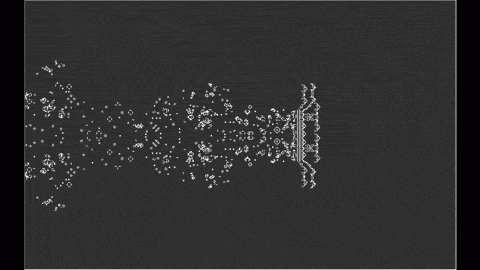John Conway’s Game of Life! I looked at the old forum posts you had on this and tried to find some of the patches in the zipped file of old forum patches, because I can’t download them directly off of the thread anymore. But I can’t find anything.
I got into Conway’s ideas through Manuel DeLanda’s Philosophy and Simulation: The Emergence of Synthetic Reason.
If anyone is interested, I would say DeLanda’s ideas are systematic. By that I mean to say that if you try to isolate a few of them and integrate their conclusions into your own thought, there will be definite limitations. However, over the course of his body of work, having addressed and overturned key ideas, a different way of dealing with categories or categorization unfolds. Vast possibilities open up and a path diverges from the stuck, received ontologies into what DeLanda and others refer to as a new materialism, through concepts like “multiplicity,” borrowed from Gilles DeLeuze.
Where did we get to with the Game of Life concept? Have we been able to seed an environment that evolves unique independent entities that interact in ways that codefine their identities, which, when taken together, produce multi-organized superstructures?

For grins, I’ve attached the 8x8 grid and the 32x32 grid, both assembled by a script.
conway64.audulus (1.0 MB)
conway1024.audulus.zip (2.6 MB)
I did a bunch of working trying to figure out ways to make these things useful, but it was a challenge. I built a 64-slot interlace node (like a sort of clocked mux node) inspired by @biminiroad’s work, but it’s still a challenge to do anything with it. It might be cool as a sort of procedural randomization source, or possibly a step sequencer.
2 Likes
Would it make sense to use these to break the signal out. I was able to generate something that is floating around – a shape is now moving about the grid on its own without “dying.”
This is pretty cool:
I guess the thing is you can generate patterns, or “life” out of certain initial conditions. So it is not just a “randomization” device.
1 Like
It is news to me that, although Conway’s Game is a type of cellular automata, alot of the more grandiose colonies are the result of similar rule based grids such as “brain,” for example. Having a look at the video below, there are some inspiring ideas for sequencing.
3 Likes
I’ve never played with rubypico, but I suspect if anything is going to cause problems it’s the FFT library I’m using, which requires native compilation. I may take a look at a pure-ruby alternative, but it would require some rewriting. However, it only impacts the wavetable node, which I think maybe people aren’t using as much as the spline and midi node stuff.
3 Likes
This may be naive to ask, but I will anyway! Could this lead to a “scripted element” node in the Audulus UI that has a property that points to an external file (!!) or embedded code?
…and speaking of UIs, is the node or grouped element appearance saved in a manner similar to stylesheets? Any chance that could be brought out into the light?
Before my RN thing I did a lot of “roll your own” DHTML-type work on my tiny company’s website, using Javascript to manipulate the DOM and, of course, stylesheets to put things in their places.
2 Likes
